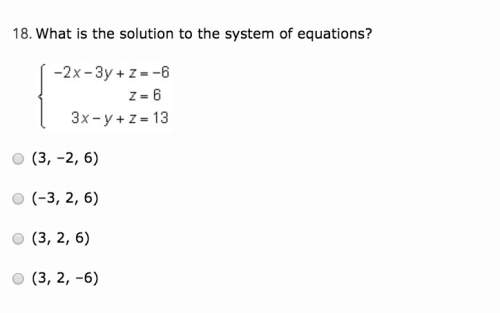
Mathematics, 03.03.2020 00:06 kiki4832
A professor has been asked to teach a course in social science statistics off-campus to a class of graduate students enrolled in the Continuing Education Program of the University. Because the professor has never taught in this program before, he does not know a great deal about the needs and backgrounds of the students in the class. In order to learn more about the students, on the first day of class, he obtains from each of them the following information: age, major field as an undergraduate student, number of statistics courses taken previously, and interest in conducting empirical research (coded low, medium, high). This information is listed below:
Student# Age Maior Statistics Courses Research Interest
1 24 Poli Sci 3 High
2 55 Zoology 3 High
3 26 Botany 0 Low
4 55 Sociology 0 Low
5 22 Poli Sci 1 Low
6 23 Sociology 2 Medium
7 24 Poli Sci 2 Medium
8 55 Forestry 1 Low
9 56 Engineering 9 High
10 53 Poli Sci 1 Medium
11 26 Chemistry 2 Medium
12 24 Sociology 0 Low
13 54 Physics 3 High
14 51 Sociology 3 High
15 55 Poli Sci 0 Low
16 25 Poli Sci 1 Medium
17 24 Sociology 1 Medium
(a) At what level of measurement is each of these variables?
(b) In order to summarize this data, the professor decides to calculate measures of central tendency for these variables. For each variable, which measures of the central tendency can meaningfully be calculated?
(c) For each of these variables, calculate the measure(s) of central tendency that can be meaningfully calculated.
(d) For each of these variables, which measure(s) of central tendency would it be most useful for the professor to bear in mind as he conducts the class; i. e., for each of these variables, which measure(s) yield(s) the most typical or representative value for the class of students? For each variable, briefly explain your answer.

Answers: 2


Another question on Mathematics

Mathematics, 21.06.2019 14:10
An unknown number of kids and buses are getting assigned. when assigning 4 kids to each bus, there are 2 kids that aren't placed in a bus. when assigning 8 kids to each bus, there are 2 empty buses. how many total kids are there?
Answers: 1

Mathematics, 21.06.2019 23:50
Astudent draws two parabolas both parabolas cross the x axis at (-4,0) and (6,0) the y intercept of the first parabolas is (0,-12). the y intercept of the second parabola is (0,-24) what is the positive difference between the a values for the two functions that describe the parabolas
Answers: 3

Mathematics, 22.06.2019 00:20
Once george got to know adam, they found that they really liked each other. this is an example of what factor in friendship
Answers: 1

Mathematics, 22.06.2019 01:00
Match the one-to-one functions with their inverse functions.
Answers: 1
You know the right answer?
A professor has been asked to teach a course in social science statistics off-campus to a class of g...
Questions












Computers and Technology, 07.03.2020 02:51


Mathematics, 07.03.2020 02:52





Computers and Technology, 07.03.2020 02:52

English, 07.03.2020 02:52




